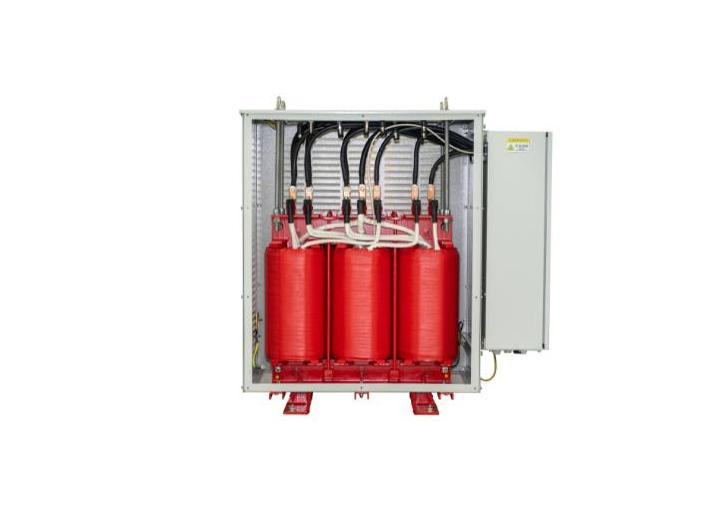Discover the latest advancements in transformer technology from safety guidelines to cutting-edge innovations. Explore the importance of safety protocols, emerging technologies, and the impact of transformer innovations on energy infrastructure. Learn from case studies and expert insights, with a focus on 208 to 240 Voltage Transformers by industry leader Shinenergy.
Understanding 208 to 240 Voltage Transformers: A Beginner’s Guide
1. Introduction to Transformers
Transformers serve as crucial components in electrical systems, facilitating the conversion of voltage levels to meet the requirements of various devices and equipment. They operate on the principle of electromagnetic induction, where alternating current (AC) passes through coils of wire to induce voltage changes. Among the myriad of transformers available, those tasked with converting voltages from 208 to 240 hold particular significance in numerous applications.
2. The 208 to 240 Voltage Range and Its Significance
The voltage range from 208 to 240 volts represents a common electrical standard used in many industrial, commercial, and residential settings. This range is pivotal for ensuring compatibility between power sources and electrical devices, providing the necessary voltage levels for optimal operation.
3. Types of Transformers Used for Converting Voltages
Transformers designed to convert voltages from 208 to 240 volts come in various configurations, including step-up and step-down transformers. Step-up transformers increase voltage levels, while step-down transformers decrease them. Additionally, autotransformers offer another option for voltage conversion, utilizing a single winding with multiple taps to adjust voltage levels.
4. Applications of 208 to 240 Voltage Transformers in Various Industries
208 to 240 Voltage Transformers find widespread use across diverse industries, including manufacturing, telecommunications, healthcare, and data centers. They power essential equipment such as motors, lighting systems, HVAC (heating, ventilation, and air conditioning) units, and telecommunications infrastructure.
5. Key Considerations When Selecting and Installing These Transformers
Several factors must be considered when selecting and installing 208 to 240 Voltage Transformers. These include the specific voltage requirements of connected equipment, load characteristics, ambient operating conditions, and safety regulations. Proper sizing, installation, and maintenance are critical to ensuring optimal performance and longevity.

The Importance of Efficiency in 208 to 240 Voltage Transformers
1. Overview of Energy Efficiency in Electrical Systems
Efficiency is a paramount consideration in electrical systems, as it directly impacts energy consumption, operating costs, and environmental sustainability. In the context of transformers, efficiency refers to the ratio of output power to input power, with higher efficiency resulting in less wasted energy.
2. Factors Affecting the Efficiency of Transformers
Several factors influence the efficiency of 208 to 240 Voltage Transformers, including core and winding materials, design topology, load characteristics, and operating conditions. Core losses, copper losses, and stray losses are primary contributors to inefficiency and heat generation in transformers.
3. Comparison of Efficiency Ratings for Different Transformer Models
Efficiency ratings vary among transformer models, with newer designs typically offering higher efficiency levels. Manufacturers like Shinenergy prioritize efficiency in their transformer designs, utilizing advanced materials and manufacturing processes to minimize losses and maximize performance.
4. Benefits of Using Energy-Efficient 208 to 240 Voltage Transformers
The benefits of employing energy-efficient transformers extend beyond cost savings to include reduced environmental impact, improved system reliability, and compliance with energy efficiency regulations. Energy-efficient transformers help organizations meet sustainability goals while enhancing overall operational efficiency.
5. Strategies for Optimizing Transformer Efficiency in Industrial and Commercial Settings
Optimizing transformer efficiency requires a holistic approach that encompasses proper sizing, load management, maintenance, and utilization of advanced technologies. Implementing strategies such as load profiling, voltage regulation, and power factor correction can further enhance efficiency and reduce energy waste.
Troubleshooting Common Issues with 208 to 240 Voltage Transformers
1. Common Problems Encountered with Transformers in the 208 to 240 Voltage Range
Despite their importance, 208 to 240 Voltage Transformers may experience various issues that affect their performance and reliability. Common problems include overheating, voltage fluctuations, insulation degradation, and mechanical failures.
2. Causes and Symptoms of Transformer Malfunctions
Understanding the root causes and symptoms of transformer malfunctions is essential for effective troubleshooting. Factors such as overloading, voltage transients, environmental conditions, and manufacturing defects can lead to a range of issues, including abnormal noise, odor, overheating, and failure to energize.
3. Diagnostic Techniques for Identifying Transformer Issues
Diagnostic techniques such as visual inspection, insulation resistance testing, power quality analysis, and thermographic imaging are employed to identify transformer issues accurately. These techniques help pinpoint the location and nature of faults, guiding subsequent repair and maintenance efforts.
4. Step-by-Step Troubleshooting Procedures for Addressing Common Problems
A systematic approach to troubleshooting involves sequential testing and analysis to isolate and rectify transformer problems. This may include verifying input and output voltages, checking connections, testing insulation integrity, and performing impedance measurements.
5. Preventive Maintenance Measures to Prolong Transformer Lifespan and Reliability
Preventive maintenance is essential for preserving transformer performance and longevity. Regular inspections, cleaning, lubrication, and testing help detect and address potential issues before they escalate, minimizing downtime and repair costs.
6. Resources for Seeking Professional Assistance with Transformer Repairs and Replacements
In cases where troubleshooting and maintenance tasks exceed internal capabilities, seeking professional assistance from qualified technicians or transformer specialists is advisable. Manufacturers like Shinenergy offer technical support, repair services, and replacement options to address transformer issues effectively.
Advancements in 208 to 240 Voltage Transformer Technology: What’s New?
1. Overview of Recent Developments in Transformer Design and Manufacturing
The field of transformer design and manufacturing is witnessing rapid advancements driven by technological innovation and evolving energy needs. Recent developments focus on improving efficiency, reliability, and sustainability while meeting the growing power demand. Manufacturers like Shinenergy are at the forefront of these innovations, investing in research and development to deliver cutting-edge transformer solutions.

2. Emerging Technologies Improving the Performance and Efficiency of Transformers
Emerging technologies such as advanced materials, digital monitoring systems, and predictive maintenance algorithms are revolutionizing transformer performance and efficiency. High-performance materials, such as amorphous metal alloys and nanocrystalline cores, reduce losses and enhance efficiency. Digital monitoring systems provide real-time data on transformer health and performance, enabling proactive maintenance and optimization.
3. Innovative Features and Functionalities of Next-Generation 208 to 240 Voltage Transformers
Next-generation 208 to 240 Voltage Transformers boast innovative features and functionalities designed to meet the evolving needs of modern electrical systems. These include integrated voltage regulation, enhanced cooling systems, and modular designs for scalability and flexibility. Smart grid integration and communication capabilities enable seamless integration into advanced energy infrastructure.
4. Potential Impact of Transformer Innovations on Energy Infrastructure and Sustainability Goals
The adoption of advanced transformer technologies has significant implications for energy infrastructure and sustainability goals. By improving efficiency, reliability, and grid flexibility, these innovations support the transition to cleaner energy sources and the reduction of greenhouse gas emissions. Smart grid integration and demand response capabilities facilitate the integration of renewable energy resources and support energy conservation efforts.
5. Challenges and Opportunities for Further Advancements in Transformer Technology
Despite the progress made in transformer technology, several challenges remain, including cost considerations, interoperability issues, and the need for standardized communication protocols. Addressing these challenges presents opportunities for further advancements in transformer efficiency, reliability, and functionality. Collaboration among industry stakeholders, ongoing research and development, and regulatory support are key to unlocking the full potential of transformer technology.

Conclusion
In conclusion, understanding 208 to 240 Voltage Transformers is essential for anyone working with electrical systems. From their fundamental principles to their practical applications and maintenance considerations, these transformers play a vital role in ensuring reliable and efficient power distribution. By staying informed about transformer technology and best practices, organizations can optimize performance, reduce energy consumption, and enhance overall system reliability.

